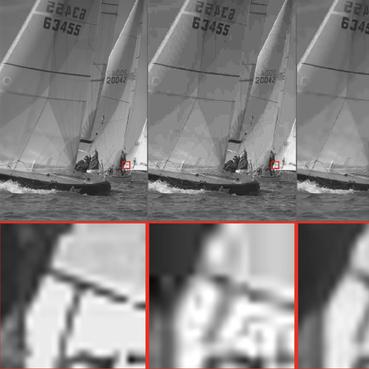Lesion Focused Super-Resolution
Super-resolution (SR) for image enhancement has great importance in medical image applications. Broadly speaking, there are two types of SR, one requires multiple low resolution (LR) images from different views of the same object to be reconstructed to the high resolution (HR) output, and the other one relies on the learning from a large amount of training datasets, i.e., LR-HR pairs. In real clinical environment, acquiring images from multi-views is expensive and sometimes infeasible. In this paper, we present a novel Generative Adversarial Networks (GAN) based learning framework to achieve SR from its LR version. By performing simulation based studies on the Multimodal Brain Tumor Segmentation Challenge (BraTS) datasets, we demonstrate the efficacy of our method in application of brain tumor MRI enhancement. Compared to bilinear interpolation and other state-of-the-art SR methods, our model is lesion focused, which is not only resulted in better perceptual image quality without blurring, but also more efficient and directly benefit for the following clinical tasks, e.g., lesion detection and abnormality enhancement. Therefore, we can envisage the application of our SR method to boost image spatial resolution while maintaining crucial diagnostic information for further clinical tasks.
PDF Abstract




